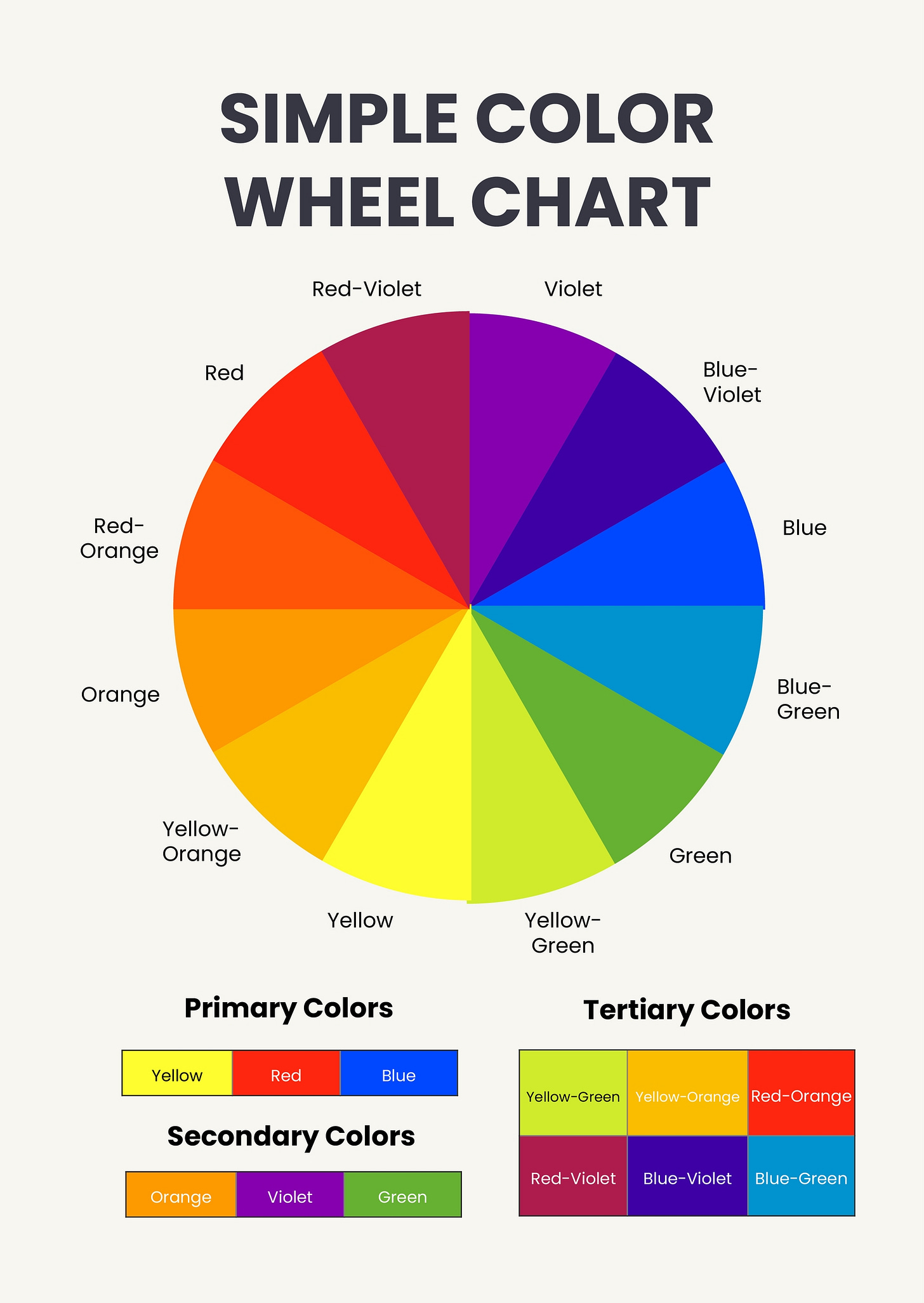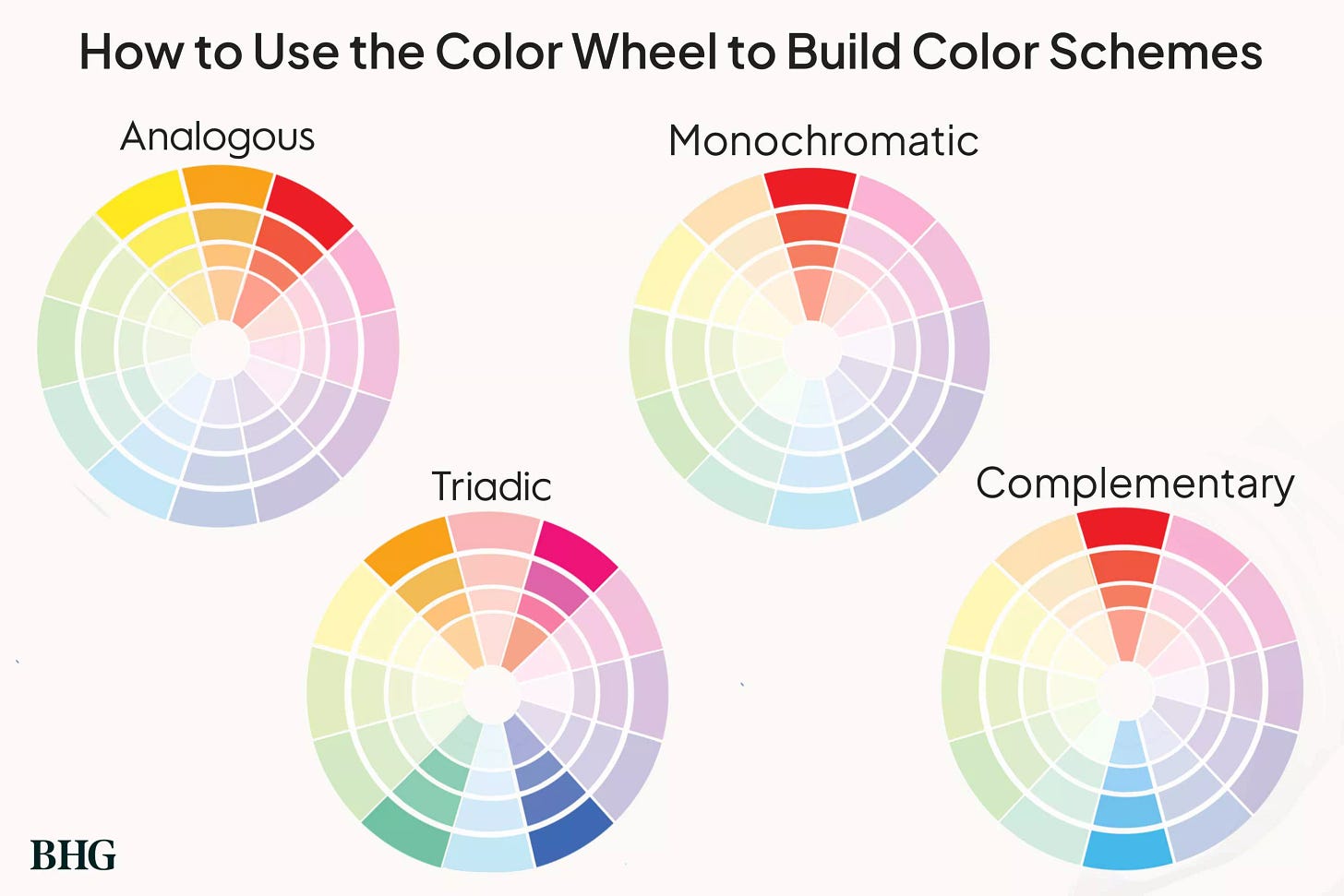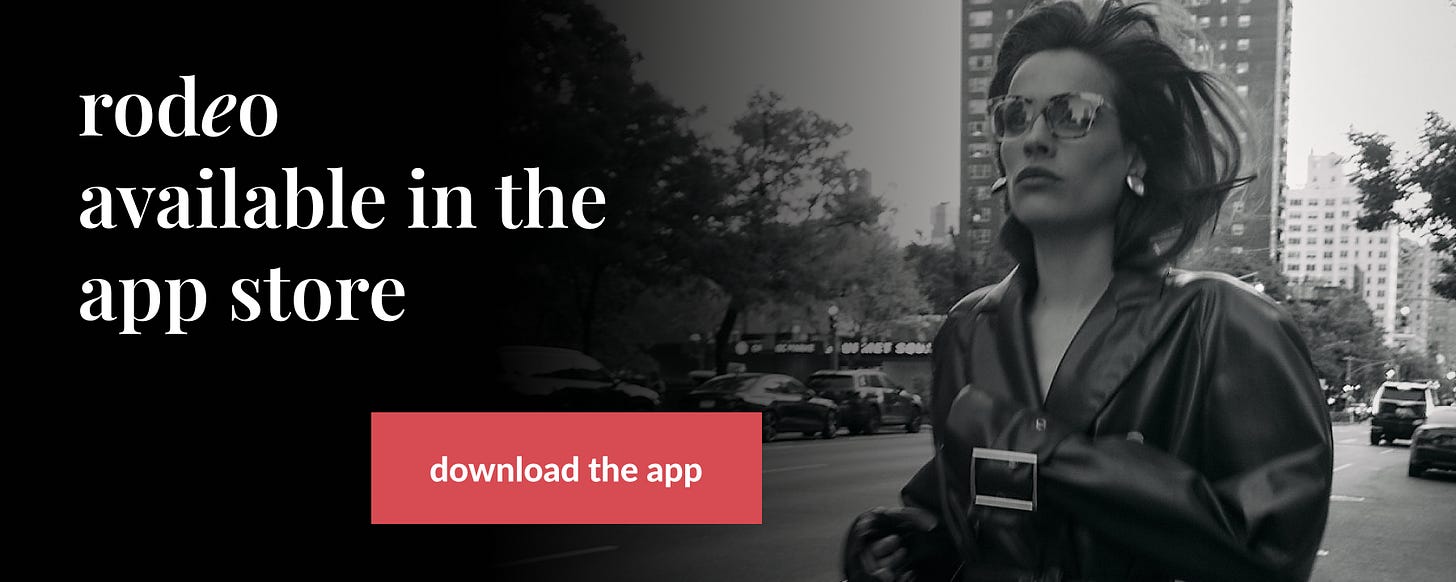Does This Match?
All things color theory
From TikToks to try-ons, color theory is having a moment—and honestly, we’re into it.
We asked our intern Kathryn Orr to break it down: what the color wheel actually means, how to find your most flattering shades, and how to use all of it to build better outfits.
It’s the Rodeo way—style with smarts, personality, and a little bit of ✨ science ✨.
Let’s get into it 🎨
xx,
LRP & The Rodeo Team
P.S. No app yet? That’s bold. Let’s fix it 💅
👇👇👇
Recently, I have been getting so many TikToks on my “For You Page” where girls go and get their “colors done” or “matched” to their skin tone. While it’s not the most exciting aspect of fashion, a basic understanding of color theory provides the foundation to “color match” oneself.
Let me explain…
Color theory is the study of how colors interact with each other and the visual effects they produce when combined. By understanding and interpreting color theory, you can discover various ways to accentuate your personality and physical features, while also being able to interpret others’ characteristics based on their colors.
Critical Concepts of Color Theory:
Primary Colors: Blue, red, and yellow are the primary colors that cannot be created by mixing other colors.
Secondary Colors: Green, orange, and purple are formed by mixing two primary colors.
Tertiary Colors: These are created by mixing a primary color with a secondary color, such as red-orange or blue-green.
Complementary Colors: Colors opposite each other on the color wheel (e.g., red and green).
Analogous Colors: Colors next to each other on the color wheel (e.g., blue, blue-green, and green).
Triadic Colors: These colors are evenly spaced around the color wheel (e.g., red, yellow, and blue).
Split-Complementary Colors: This is a variation of the complementary color scheme in which a base color is paired with two colors adjacent to its complementary color.
Warm Colors: Red, orange, and yellow evoke warm energy and excitement.
Cool Colors: Blue, green, and purple evoke calmness, relaxation, and serenity.
Emotional Impact: Different colors can evoke different emotions. For example, blue is associated with calmness and trust, while red can evoke passion and urgency.
Cultural Significance: Colors can have different meanings in different cultures. For instance, white is often associated with purity in Western cultures, but can signify mourning in some Eastern Cultures.
Now that we understand the fundamentals, let’s explore the steps to picking an outfit.
Start with a Base Color: Choose one dominant color from your outfit, such as a dress or pants. Whatever you choose, that base is now your primary base color.
Add Complementary Colors: To make your outfit stand out, find the color opposite your base on the color wheel. You can use this color for accessories, shoes, or outerwear to add contrast.
Analogous Colors: For a more harmonious or subtle look, choose colors next to each other on the color wheel. For example, if your base color is blue, you could pair it with blue-green or blue-purple. This creates a cohesive and soothing appearance.
Triadic Colors: For a balanced, vibrant look, choose three colors evenly spaced on the color wheel. For example, if you have a yellow top, you could pair it with a blue jacket and red shoes.
2. Understanding Saturation and Value
Saturation: If your base color is vivid and highly saturated, balance it with more muted or neutral tones to avoid overwhelming the outfit. For example, a bright red skirt can be paired with a soft beige top.
Value: Consider the lightness or darkness of your outfit. If you’re wearing a dark color, such as navy or black, balance it with a lighter element, like a white blouse or pastel accessories, to create contrast and avoid a heavy look.
Winter: Use deeper, richer colors like burgundy, forest green, or navy. Pair them with dark neutrals, such as black and gray.
Spring: Incorporate pastels and lighter colors, like lavender, mint, or blush. Pair these with light neutrals like white or beige.
Summer: Opt for bright, vibrant colors like coral, turquoise, or lemon yellow. Pair them with white or light colors to keep the outfit fresh and airy.
Fall: Choose earthy tones like mustard, olive, and rust. These pair well with brown, camel, or other warm neutrals.
I know that was A LOT of information! However, understanding these concepts will make your wardrobe more versatile while expanding and elevating your style.







